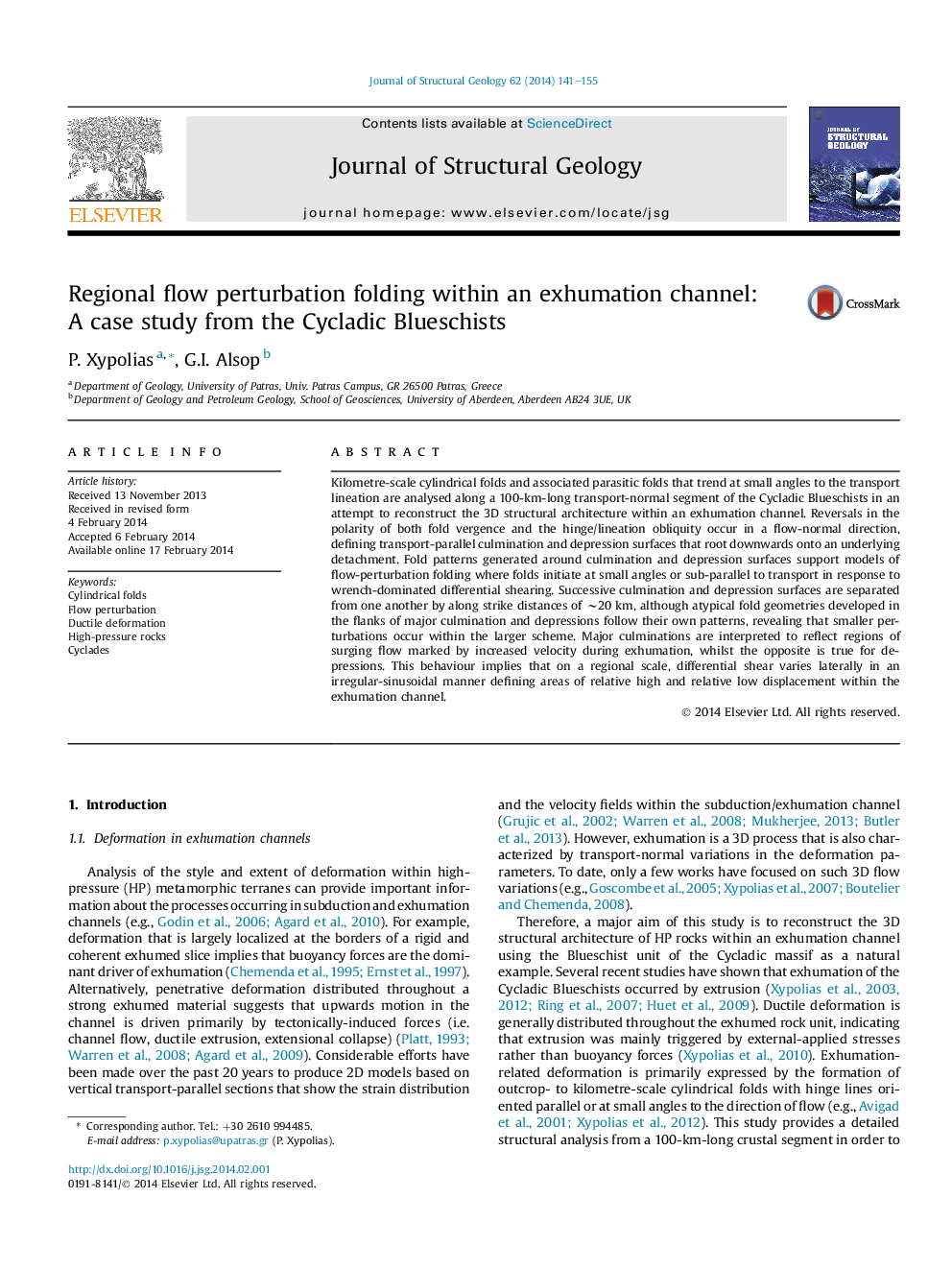| کد مقاله | کد نشریه | سال انتشار | مقاله انگلیسی | نسخه تمام متن |
|---|---|---|---|---|
| 4733134 | 1640515 | 2014 | 15 صفحه PDF | دانلود رایگان |

• Flow perturbation results in transport-(sub)parallel folds in Cycladic blueschists.
• Transport-parallel culmination and depression surfaces are spaced ca. 20 km apart.
• Smaller flow perturbation folding occurs within the larger scheme.
• Culminations and depressions reflect surging and slackening flow, respectively.
• Velocity fields in the exhumation channel vary laterally in a sinusoidal manner.
Kilometre-scale cylindrical folds and associated parasitic folds that trend at small angles to the transport lineation are analysed along a 100-km-long transport-normal segment of the Cycladic Blueschists in an attempt to reconstruct the 3D structural architecture within an exhumation channel. Reversals in the polarity of both fold vergence and the hinge/lineation obliquity occur in a flow-normal direction, defining transport-parallel culmination and depression surfaces that root downwards onto an underlying detachment. Fold patterns generated around culmination and depression surfaces support models of flow-perturbation folding where folds initiate at small angles or sub-parallel to transport in response to wrench-dominated differential shearing. Successive culmination and depression surfaces are separated from one another by along strike distances of ∼20 km, although atypical fold geometries developed in the flanks of major culmination and depressions follow their own patterns, revealing that smaller perturbations occur within the larger scheme. Major culminations are interpreted to reflect regions of surging flow marked by increased velocity during exhumation, whilst the opposite is true for depressions. This behaviour implies that on a regional scale, differential shear varies laterally in an irregular-sinusoidal manner defining areas of relative high and relative low displacement within the exhumation channel.
Journal: Journal of Structural Geology - Volume 62, May 2014, Pages 141–155